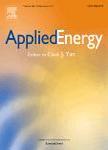版权所有:内蒙古大学图书馆 技术提供:维普资讯• 智图
内蒙古自治区呼和浩特市赛罕区大学西街235号 邮编: 010021

作者机构:Jiangsu Univ Ctr Energy Dev & Environm Protect Zhenjiang 212013 Jiangsu Peoples R China
出 版 物:《APPLIED ENERGY》 (实用能源)
年 卷 期:2023年第343卷第1期
核心收录:
学科分类:0820[工学-石油与天然气工程] 0817[工学-化学工程与技术] 08[工学] 0807[工学-动力工程及工程热物理]
基 金:National Natural Science Foundation of China [72174077 72243005]
主 题:Distributed energy Virtual real-time electricity price Demand side matches supply side Particle swarm optimization algorithm
摘 要:Intermittence and fluctuation of renewable energy increase the cost of real-time balance of power supply and demand, which will affect the stability of the power grid. How to design the incentive mechanism to increase the flexibility of the distributed energy system and reduce the cost of real-time supply-demand balance is an urgent problem to be solved. In this study, from the perspective of the demand side actively matching the supply side, a virtual real-time electricity price optimization model based on the credit mechanism is proposed. We use the linear decreasing inertia weight particle swarm optimization algorithm to optimize the user s electricity price and realize the minimization of the total electricity cost. The influence of the virtual real-time electricity price incentive mechanism on the matching degree between the power load curve and the distributed energy output curve is also studied. Moreover, a novel index is put forward to quantitatively measure the matching degree between users power load curve and distributed energy output curve. Taking a multi-microgrid system in a China s industrial park as the case, we have found the results that the virtual real-time electricity price optimization model can not only reduce users total power cost by 7.8108%, but also improve the matching degree between the demand side and the supply side by 2.4643%. The new demand response incentive mechanism we have presented in this paper may promote the effective utilization of distributed energy and reduce the impact of renewable energy on power grid.